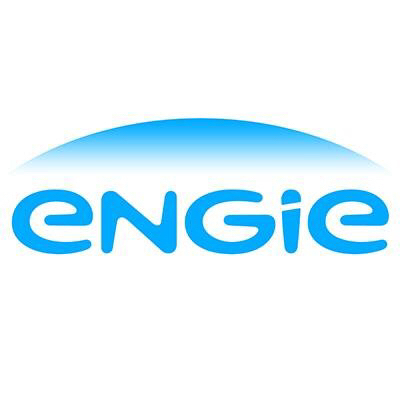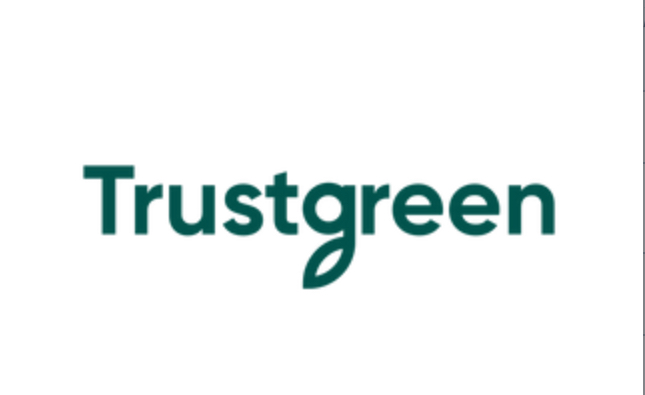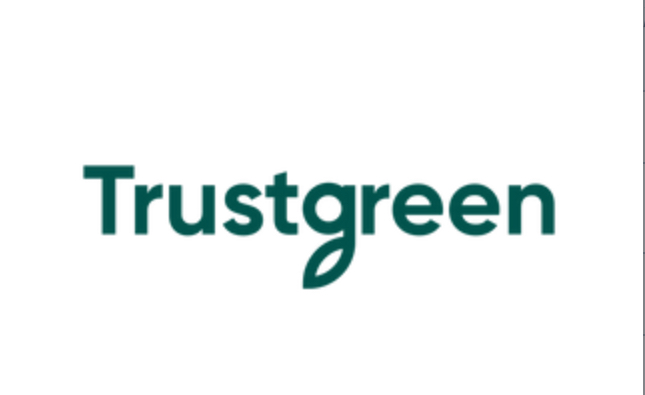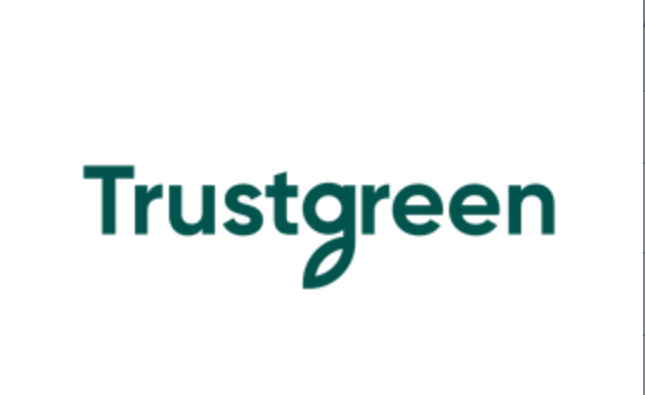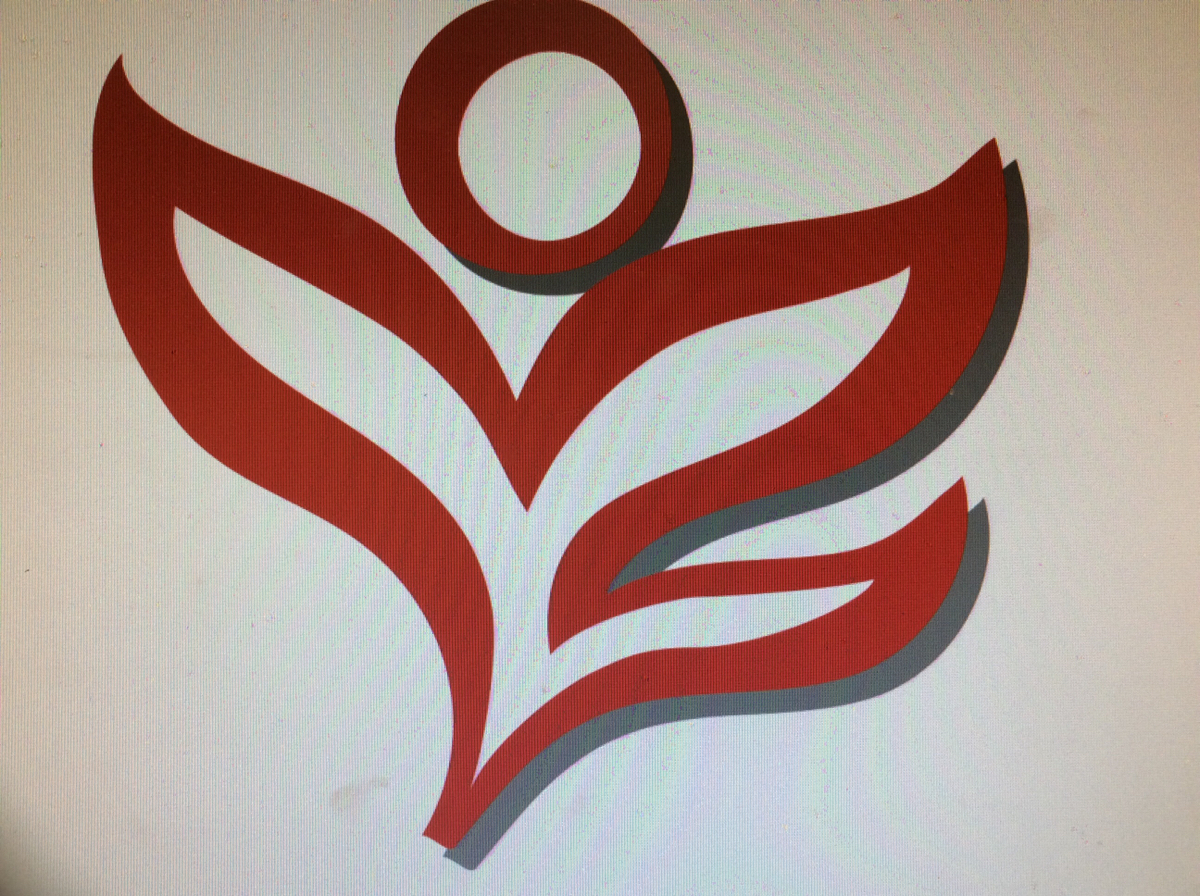Information
-
Conducted on
-
Prepared by
-
Location
Section 1 - Site Setup and Storage
-
1.1 Is there a safe means of access and egress to/from the site and compound?
-
1.2 Are site security measures adequate, including the provision of secure perimeter fencing where required?
-
1.3 Are walkways/pedestrian routes maintained in a safe condition?
-
1.4 Has the site compound and/or set up been properly organised?
-
1.5 Is there a suitable office for Site Management to work from?
-
1.6 Have adequate storage facilities/areas been provided and have materials and equipment been stored in a safe manner? (no risk of falling material)
-
1.7 Have adequate welfare facilities been provided on site for the current and foreseen workforce, and are they maintained to a clean/suitable standard?
-
1.8 Is there a designated secure area for skips/waste?
-
1.9 Is there adequate signage displayed, including an external information board and internal project board?
-
1.10 Are all significant risks and impacts identified and controlled?
Section 2 - Public Protection and Community Relations
-
2.1 - Are all significant hazards in areas where the public have access controlled? E.G Access to work Areas and site perimeter.
-
2.2 - Is balcony protection installed where required? If so is this adequate and maintained?
-
2.3 - Is temporary floor protection adequately managed?
-
2.4 - Is adequate warning signage provided for the public?
-
2.5 - Where existing lighting is obscured/disconnected/removed have alternatives been provided?
-
2.6 - Is segregation of public carried out using suitable pedestrian barriers with tapping rail where applicable?
-
2.7 - Are emissions from processes adequately controlled (noise / dust / fumes)?
-
2.8 - Are all significant risks and impacts identified and controlled?
Section 3 – Administration and Management (Health and Safety)
-
3.1 - Is the Construction Phase SHE Plan available and regularly reviewed and updated if required?
-
3.2 - Are all works in progress covered by a suitable and sufficient Risk Assessment and Method Statement?
-
3.3 Is there evidence that RAMS are briefed to the workforce?
-
3.4 - Does the site have suitable First Aid cover and complete first aid supplies relevant to works on site with the contents in date?
-
3.5 - Is statutory information displayed on the project board (F10, HSE poster, insurance, policies, nearest hospital and eye clinic)?
-
3.6 - Have all previous Corrective Actions been closed out from previous visits? (GO Visits, Health Checks)
-
3.7 - Have permits to work been used correctly where required and are they recorded on the permit log?
-
3.8 - Have statutory inspections been carried out as required and are they filed, including SHE weekly inspections?
-
3.9 - Is there a process for signing in/out? And is this process being followed.
-
3.10 - Is there evidence that all people have been inducted on site using the Induction DVD/PowerPoint Presentation and site-specific project board?
-
3.11 - Have all relevant bulletins and TBT been briefed? To include manual handling, gas safety and asbestos awareness where required
-
3.12 - Are records of all competences being maintained?
-
3.13 - Are site wide risk assessments completed and required risk assessments in place?
-
3.14 - Does the Site manager have the necessary competencies for site?
-
3.15 - Are records of incidents and complaints maintained? Visits by regulatory agencies recorded and communicated to the SHE Team?
-
3.16 - Is there evidence of Near Misses and observations being reported on site?
-
3.17 - Is there evidence of monthly MSV's being undertaken and communicated to site teams?
Section 4 – Workplace and Housekeeping
-
4.1 - Are walkways clear, unobstructed and free from significant risks?
-
4.2 - Are lighting levels adequate in walkways and work areas? Including task lighting where required.
-
4.3 - Is housekeeping to an adequate level?
-
4.4 - Is all work equipment, material and waste in work areas stored in a safe condition?
-
4.5 - Is cable management adequate?
-
4.6 - Is the potential of falling from height adequately controlled?
-
4.7 - Is the potential of falling objects adequately controlled?
-
4.8 - Is the interface between different trades suitably managed to prevent exposure to risks from others?
-
4.9 - Are all significant risks in workplaces controlled?
Section 5 – Scaffolding
-
5.1 - Is the scaffold free from significant defects? (including ties, tubes and fittings, foundations and boards)?
-
5.2 - Are incomplete sections of scaffold signed?
-
5.3 - Is any area where there is a risk from falling objects closed off?
-
5.4 - Are all ladders fixed in position and of correct orientation?
-
5.5 - Where ladder hatches are installed are they kept closed?
-
5.6 - Are brick guards fixed where required?
-
5.7 - Is debris netting and/or monoflex in place where required, and fixed correctly?
-
5.8 - Is there evidence that scaffolds are made safe at the end of each working day?
-
5.9 - Has the competency of scaffolders been checked? Copies of CISRS cards must be on site.
-
5.10 - Are scaffolders working to SG4:15? E.g. advanced guardrail and correct fall arrest.
-
5.11 - Is housekeeping during scaffold erection and dismantling managed?
-
5.12 - Are relevant compliance sheets available or the design drawings and calculations for 'design' scaffolds?
-
5.13 - Have scaffolds been erected in accordance with TG20:21 or the design?
-
5.14 - Is the scaffold handover certificate available, are details correct and is scaffold being used in line with the handover certificate?
-
5.15 - Are test results available for drilled in fixings and calibration certificates available?
-
5.16 - Have inspections been carried out as required?
-
5.17 - If a gin wheel is in use are LOLER certificates available?
-
5.18 - Are all significant risks and impacts identified and controlled?
Section 6 - Mobile Towers and Other Access Equipment
-
6.1 - Has the most appropriate form of access equipment been chosen?
-
6.2 - Have overhead obstructions been considered?
-
6.3 - Is the access equipment sat on a level and stable foundation?
-
6.4 - Are those erecting and/or responsible for mobile towers or other access platforms competent?
-
6.5 - Are access platforms erected in accordance with manufacturer’s instructions?
-
6.6 - Are incomplete platforms marked as incomplete?
-
6.7 - Are hop-ups, steps and ladders of the correct type / grade and their use adequately controlled?
-
6.8 - Where ladders are used as a work platform, is there a suitable risk assessment for this and control measures implemented?
-
6.9 - Is equipment being stored correctly when not in use?
-
6.10 - Is all equipment in good order?
-
6.11 - Are copies of inspections for all access equipment available?
-
6.12 - Are all significant risks and impacts identified and controlled?
Section 7 – Powered Access Equipment
-
7.1 - Is the equipment appropriate for the task?
-
7.2 - Is the equipment in good condition and fit for purpose?
-
7.3 - Are all moving parts and controls for operating guarded?
-
7.4 - Is the SWL, maximum number of persons and maximum operating wind speed indicated on the MEWP? Is this being adhered to?
-
7.5 - Has safe access into/out of the equipment been considered?
-
7.6 - Have overhead hazards been considered and adequate controls put in place i.e., exclusion zones, markers or goalposts put in place?
-
7.7 - Has a suitable exclusion zone been set up using physical barriers and appropriate signage around the MEWP plus taking into account its working envelope?
-
7.8 - Are the operators of scissor and boom type MEWPS clipped in or is there a risk assessment in place to substantiate otherwise?
-
7.9 - Are cradle moves being undertaken by competent persons (where required)?
-
7.10 - Are counterweights for cradles locked in place?
-
7.11 - Is the equipment isolated and the keys removed when left unattended?
-
7.12 - Is there a detailed operators manual available on site?
-
7.13 - Is there an appropriate emergency plan in place?
-
7.14 - Are certificates of ‘thorough examination’ available on site, and current?
-
7.15 - Are test results available for drilled in fixings?
-
7.16 - Is there evidence that pre-use daily and weekly checks on MEWPS, cradles etc. are being carried out?
-
7.17 - Are those operating MEWPS, plant etc. competent – IPAF?
-
7.18 - Have copies of operator’s training/competence been copied into the site file?
-
7.19 - Evidence of familiarity checks for operator?
-
7.20 - Are all significant risks and impacts identified and controlled?
Section 8 – Temporary Works
-
8.1 - Have temporary works applicable to the project been identified?
-
8.2 - Is there an appointed Temporary Works Co-ordinator and Temporary Works Supervisor?
-
8.3 - Are competencies copied into the site file?
-
8.4 - Are detailed designs, drawings and calculations available for any temporary works?
-
8.5 - Is a design check certificate completed and signed off by TWE, TWC and TWS?
-
8.6 - Is the temporary works register kept up to date?
-
8.7 - Has permit to load/proceed been completed?
-
8.8 - Are the works in good order? E.g. Not showing signs of distress and/or excessive deflection.
-
8.9 - Is there evidence of regular inspections of the temporary works?
-
8.10 - Have modifications to temporary works been rechecked, with design change application completed?
-
8.11 - Are all significant risks and impacts identified and controlled?
Section 9 – Mobile Plant
-
9.1 - Is the plant in good order and suitable for the purpose for which it is provided or used?
-
9.2 - Is the plant maintained so that it remains mechanically sound and are there records available?
-
9.3 - Is the plant stable in use? Is there a safe way to get into and out of the cab and any other parts of the vehicle that need regular access?
-
9.4 - Is the plant being operated in a safe manner? i.e. is the area segregated, hazard light on and banked if required by RA.
-
9.5 - Are vehicle lights, reversing lights, a horn and other warning devices such as rotating beacons or reversing alarms fitted?
-
9.6 - Is the plant fitted with Roll Over Protection System (ROPS) where necessary?
-
9.7 - Are dangerous vehicle parts, such as power take –off, chain drives, exposed hot exhaust pipes appropriately guarded?
-
9.8 - Is the vehicle suitable for any loads carried?
-
9.9 - Are seat belts fitted and used correctly?
-
9.10 - Are mirrors and or closed circuit TV (CCTV) systems fitted and fit for purpose?
-
9.11 - Is any towing/quick hitch in good order and spares available? – correct pin?
-
9.12 - Is equipment Manufacturers tag on machine? E.g Plate containing serial number etc
-
9.13 - Is equipment that may be used for lifting marked with a SWL?
-
9.14 - If used on the road is the vehicle registered etc and operator has a current UK Driving Licence?
-
9.15 - Is there a Manufacturers Operation Manual available to the Mobile Plant Operator?
-
9.16 - Has security been considered and is the unauthorised use of plant prevented?
-
9.17 - Does the operator hold a CPCS Card or equivalent and is it of the correct type?
-
9.18 - Has the Mobile Plant Operator Authorisation Checklist been completed?
-
9.19 - Is equipment that may be used for lifting thoroughly examined/tested and in date?
-
9.20 - Are daily and weekly checks being carried out and recorded?
-
9.21 - Are all significant risks and impacts identified and controlled?
Section 10 – General Work Equipment
-
10.1 - Is the equipment being used for the purpose that it was designed?
-
10.2 - Are tools and equipment in good condition?
-
10.3 - Are all safety devices in place and operational?
-
10.4 - Are whip checks fitted to airlines?
-
10.5 - Are there suitable work benches/designated cutting areas where required?
-
10.6 - If there is a requirement for an exclusion zone has this been established?
-
10.7 - Is there evidence that defective equipment is removed from use?
-
10.8 - Are there specific assessments for noise, dust and vibration with adequate controls in place?
-
10.9 - Are test certificates available for specialist equipment?
-
10.10 - Are maintenance / inspection records available for the equipment?
-
10.11 - Are operatives competent to use the equipment? Are copies of training records available? E.g. abrasive wheels
-
10.12 - Are all significant risks and impacts identified and controlled?
Section 11 – Lifting
-
11.1 - Are all lifting operations reviewed by a competent person and is there a Lifting Plan available where required?
-
11.2 - Has the lifting plan checklist been carried out, where required?
-
11.3 - Are lifting operations recorded in the Construction Phase SHE Plan?
-
11.4 - Is there evidence that the lifting plan is reviewed in meetings for future adaptions to the plan?
-
11.5 - Are only contract lifts used on site?
-
11.6 - Are those involved with planning and executing the lift competent as specified by the lifting plan risk assessment?
-
11.7 - Are required licences obtained? E.g. oversailing near railway lines, over public walkways etc.
-
11.8 - Are sufficient and appropriate insurance cover arranged for all liabilities, agreed and documented between all parties, before any lifting operations commence?
-
11.9 - If applicable – Is there a risk assessment in place for an excavator being operated as a crane/hoist and gin wheels?
-
11.10 - Is there evidence of adequate information, instruction, training and supervision available to all operatives involved in lifting operations?
-
11.11 - Is there a register of lifting equipment?
-
11.12 - Are copies of all certificates and training details maintained in the site file?
-
11.13 - Are test and examination certificates available for all equipment and accessories being used and in date?
-
11.14 - Is the lifting plan being followed?
-
11.15 - Is all equipment in good visual order?
-
11.16 - Are loads stable and secure with no projections and in accordance with the lifting plan?
-
11.17 - Are lifting operations adequately supervised and carried out in a safe manner?
-
11.18 - Are height restrictors fixed to cranes / excavators that limit the height to which the job will reach and the limit to which a machine can slew?
-
11.19- Is the lift area secure? e.g. No lifting over live work areas, pedestrian management or whilst zoning is taking
-
11.20 - Are competent slinger / signaller / banksman being used and is there an effective system of communication between the operator and the slinger / signaller / banksman?
-
11.21 - Is the Safe Working Load (SWL) clearly indicated on all cranes and lifting appliances?
-
11.22 - Has the correct lifting equipment been selected, used and stored in a safe manner? i.e. using a hoist rather than a gin wheel.
-
11.23 - Is there a record of the telehandler specification and familiarisation record?11.23 - Is there a record of the telehandler specification and familiarisation record?
-
11.24 - Can the forks of a telehandler be adjusted from within the cab to avoid the need for manual adjusting?
-
11.25 - Are all significant risks and impacts identified and controlled?
Section 12 – COSHH
-
12.1 - Have all substances which may be hazardous to health been identified, assessed, SDS available and use controlled?
-
12.2 - Are hazardous materials being stored in accordance with SDS's and COSHH assessments and recorded on a register?
- Yes
- No
- N/A
-
12.3 - Has COSHH information been briefed out to those affected? - Record required.
-
12.4 - Are control measures identified in COSHH assessment being operated?
-
12.5 - Are the necessary first aid measures in place?
-
12.6 - Is the COSHH storage identified on the site plan with appropriate signage displayed?
-
12.7 - Where substances have WEL/STEL in place is adequate control and surveillance in place?
-
12.8 - Have harmful products been substituted for less harmful products where possible?
-
12.9 - Are all significant risks and impacts identified and controlled?
Section 13 – PPE
-
13.1 - Is all PPE/RPE identified by Risk and COSHH assessments etc. available on site to use?
-
13.2 – is there a sufficient supply of replacement PPE/RPE, where required?
-
13.3 - Is all PPE/RPE provided of the correct type/grade?
-
13.4 – Are records of face fit test certificates kept on site?
-
13.5 – Where necessary, is there evidence that operatives have been given instruction / training on the use of PPE/RPE?
-
13.6 – Where required, are there maintenance records available for PPE/RPE?
-
13.7 – Is there adequate signage in place stating PPE/RPE requirements, where necessary? E.g. ear protection zone.
-
13.8 – Is PPE/RPE being worn correctly?
-
13.9 – Does PPE/RPE in use appear in good condition?
-
13.10 - Are all significant risks and impacts identified and controlled?
Section 14 – Manual Handling
-
14.1 - Have all manual handling operations been identified, assessed and managed and control measures briefed out?
-
14.2 - Where mechanical aids been identified within RAMS are they being used?
-
14.3 - Has manual handling training been provided where required?
-
14.4 - Are weight of items known? E.g. documented in RAMS or displayed on items
-
14.5 - Are all significant risks and impacts identified and controlled?
Section 15 – Noise and Vibration
-
15.1 - Is exposure to noise levels likely to exceed the lower exposure action level of 80db(A) been identified?
-
15.2 - Has noise above 80 dB (A) been controlled at source where possible?
-
15.3 - Have hearing protection zones been established for areas where noise exceeds 85 dB (A)? And are these adequately signed?
-
15.4 - Are hearing protection zones displayed on site plan and has the information on hearing protection zones been briefed out? - Evidence required.
-
15.5 - Where required has a S61 consent been obtained and is there evidence of monitoring and compliance in accordance with it?
-
15.6 - Have others who may be affected by the noise been considered and consulted?
-
15.7 - Does the site or task have working hour restrictions and are these complied with?
-
15.8 - Has hearing protection been assessed to ensure compliance with other PPE?
-
15.9 - Has a risk assessment been carried out for vibrating equipment which includes a soundly based estimate of the employees’ exposure to vibration?
-
15.10 - Have work practices where hand-arm vibration is likely to exceed the daily action value [2.5 m/s² A (8)] been identified with suitable controls in place?
-
15.11 - Have work practices where whole-body vibration could exceed the daily exposure limit value [1.15 m/s² A (8)] been identified and controlled?
-
15.12 - Have all operatives been made aware of the risks and control measures in place for Noise and Vibration?
-
15.13 - Are health surveillance records available where required?
-
15.14 - Are all significant risks and impacts identified and controlled?
Section 16 – Fire Prevention
-
16.1 - Has the site developed a written fire plan, drawn fire plan and an associated risk assessment for all work areas and is it sufficient for the workplace?
-
16.2 - Is there evidence that the fire plan is briefed out and/or included in the induction?
-
16.3- Is the drawn fire plan displayed on the project board?
-
16.4 - Is there suitable means of escape and are they kept clear?
-
16.5 - Are fire points established and maintained?
-
16.6 - Are fire extinguishers suitable for the types of fire likely to be encountered?
-
16.7 - Are fire extinguishers serviceable and maintenance records available?
-
16.8 - Is there suitable means of warning and an interlinked fire alarm where required?
-
16.9 - Where relevant, emergency arrangements give consideration to other occupiers/users?
-
16.10 - Are all potential sources of ignition, including waste and fuel identified, stored and controlled adequately?
-
16.11 - Is the site operating a 'Hot Works' permit system and are the controls detailed within the permit being complied with?
-
16.12 - Is there a nominated and trained Fire Marshal(s)?
-
16.13 - Fire Drill held in accordance with the site fire plan?
-
15.14 - Are all significant risks and impacts identified and controlled?
Section 17 – Excavations
-
17.1 - Is the service avoidance plan completed and communicated?
-
17.2 - Is there a record of the service avoidance on site checklist?
-
17.3 - Has the RAMS for excavation works been issued and relevant for Task?
-
17.4 - Has service Drawings been obtained or PAS 128 survey been carried out?
-
17.5 - Has a CAT and Genny been used to establish underground services on site and calibration certificates available?
-
17.6 - Has training / Competency been obtained for Use of Cat and Genny?
-
17.7 - Is there a permit to break ground in place?
-
17.8 -Are excavations properly supported?
-
17.9 - Is the excavation guarded to prevent people, material and plant falling in?
-
17.10 - Have stop blocks been provided for plant?
-
17.11 - Is spoil stored at a safe distance from the sides of the excavation?
-
17-12 - Has undermining of nearby structures been considered?
-
17.13 - If other services have been exposed are they adequately protected and supported?
-
17.14 - Has a safe means of access/egress been provided for the excavation?
-
17.15 - Is there an emergency procedure in place for excavations?
-
17.16 - Record of inspections for the excavation available on site?
-
17.17 - Are all significant risks and impacts identified and controlled?
Section 18 – Asbestos Management
-
18.1 - Is there asbestos information available and is it adequate for the works being undertaken?
-
18.2 - Are works in progress covered by a risk assessment and/or plan of work and is the work correctly described and categorised?
-
18.3 - Is non-licensable 'minor' work being undertaken by competent and trained personnel with the required insurances and approved by Regional SHEQ Manager if not being undertaken by a licenced contractor?
-
18.4 - Are licensable asbestos works being undertaken by a licensed company?
-
18.5 - For licenced works, has the HSE been notified using the ASB5 Notification form? Are notifiable non-licenced works notified using ASB NNLW1 notification form?
-
18.6 - Are there competence records, occupational health records and face fit records for asbestos removal operatives?
-
18.7 - Has all asbestos information been communicated to relevant personnel?
-
18.8- Is the potential for accidental release of asbestos fibres identified and controlled?
-
18.9 - Are site managers carrying out relevant Asbestos Checklists?
-
18.10 - Has the Site Manager got access to the Emergency Release asbestos procedure and is it understood?
-
18.11 - Relevant flow charts extracted from the asbestos standards are displayed on the site notice boards?
-
18.12 - Are all significant risks and impacts identified and controlled?
Section 19 – Gas Safety
-
19.1 - Have gas appliances and flues been surveyed, identified, tested and documented? (smoke testing)
-
19.2 - Have works that impact on gas appliances and flues been identified? (e.g. changes to ventilation during window replacement and working within 1m of a live flue)
-
19.3 - Are all ‘gas works’ undertaken by Gas Safe registered persons? (excludes bayonet fittings)
-
19.4 - Is there a gas flue ‘Permit to Work’ system in use for all works that impact on live gas flues, and is the system correctly implemented?
-
19.5 - Is information on GAS SAFE registered persons used on site recorded and easily accessible?
-
19.6 - Has the Site Manager undertaken the EQUANS Gas Safety training?
-
19.7 - Are specific risk assessments and method statements available for works which may impact on gas appliances and flues, and are works undertaken in accordance with the planned method of work?
-
19.8 - Is commissioning paperwork available for all new live appliances?
-
19.9 - Are gas safe records available for alterations or isolations/reconnections of gas appliances.
-
19.10 - Have those disconnecting/reconnecting bayonet fittings been trained and records kept? Do they have access to leak detection spray?
-
19.11- Are the Gas procedures available on site?
-
19.12 - Are flue tags in use?
-
19.13 - Are GAS SAFE registrations verified?
-
19.14 - Does the site paperwork link an individual GAS SAFE registered person back to individual items of work?
-
19.15 - Are all significant risks and impacts identified and controlled?
Section 20 – Electrical Safety
-
20.1 -Have RAMS been issued and are relevant for Electrical works on site?
-
20.2 - Is the need for 'live' working eliminated?
-
20.3 - Are works in the vicinity of live circuits adequately controlled? (e.g. safe isolation).
-
20.4 - Has the risk from overhead services or live conductors been identified, and are suitable control measures in place? (e.g. isolation/insulation)
-
20.5 - Are statutory undertaker’s plans available on site (where relevant)?
-
20.6 - Are tools and equipment 110v or battery powered?
-
20.7 - Are test certificates for temporary supplies available?
-
20.8 - Are all site supplies certified with no visual defects?
-
20.9 - Are all electrical appliances (including extension cables) PAT tested and in date?
-
20.10 - Are all significant risks and impacts identified and controlled?
Section 21 – Traffic Management
-
21.1 - Is there a Traffic Management Plan (written and drawn) in place, implemented and displayed with corresponding risk assessment?
-
21.2 - Are vehicle and pedestrian routes segregated / protected and signposted where necessary?
-
21.3 - Is the need for vehicles to reverse either eliminated or managed?
-
21.4 - Are clearly identified and trained vehicle banksmen used where required?
-
21.5 - Are Internal / external roads maintained in a clean condition?
-
21.6 - Are risks to the public adequately controlled?
-
21.7 - Are there wheel washing facilities available on site where applicable?
-
21.8 - Are deliveries planned to avoid congestion at site?
-
21.9 - Are vehicles maintained in a clean and road worthy condition
-
21.10 - Are all significant risks and impacts identified and controlled?
Section 22 – Ecology, Archaeology and Heritage
-
22.1 - Has an Aspects and Impacts Register been completed for the project on AIMS? Has it been reviewed as required and is it compliant on AIMS?
-
22.2 - If required, has a Biodiversity Action Plan been completed and uploaded to the Aspects and Impacts App on AIMS?
-
22.3 - Have buildings likely to contain protected bats, nesting birds or other species been surveyed by the Client?
-
22.4 - Has a mitigation programme for protected species been developed and implemented?
-
22.5 - Have Tree Preservation Orders (TPO) or Client protected trees been identified?
-
22.6 - Have listed buildings been identified and planning restrictions communicated?
-
22.7 - Are areas likely to contain archaeological resources been surveyed by the Client?
-
22.8 - Have areas with noxious and / or invasive plants been identified?
-
22.9 - Are all significant risks and impacts identified and controlled?
Section 23 – Water Resource Management
-
23.1 - Have water discharge points been identified and appropriate license in place?
-
23.2 - Is there an up-to-date drainage plan on site detailing the location of all surface water drains and sewers in and around the site and where they lead? (where appropriate)
-
23.3 - Is bulk storage of fuel in accordance with oil storage regs?
-
23.4 - Is Oil / fuel drums maintained in bunded areas?
-
23.5 - Is there evidence to reflect bunds /storage vessels are maintained to ensure they remain in good condition? Are bunds/storage areas free from rainwater, litter, oil, fuel etc.?
-
23.6 - Is drainage from the office / canteen facilities to mains sewer or septic tank?
-
23.7 - Is the drainage system maintained and free from blockages?
-
23.8 - Are there designated concrete washout areas located away from sensitive areas?
-
23.9 - Is there evidence of spill clean up training delivered to site personnel, where applicable and spill kit available?
-
23.10 - Are all significant risks and impacts identified and controlled?
Section 24 – Waste Management & Carbon
-
24.1 - Have all waste streams been identified and suitable storage obtained?
-
24.2 - Have all hazardous waste streams been identified and suitable storage obtained?
-
24.3 - Is all waste stored and segregated where possible with physical barriers and signed?
-
24.4 - Are Waste Transfer Notes and Consignment Notes held on site for all waste movements and are compliant with correct details?
-
24.5 - Is there evidence of Internal waste transfer notes and are they completed properly for EQUANS and Subcontractors (where required)?
-
24.6 - Is there a copy of EQUANS/Subcontractors Waste Carriers Licence in relevant EQUANS/Subcontractors vehicles? And a copy available in the site file?
-
24.7 - Where possible energy usage (electricity / gas / other site fuel) is monitored and recorded (monthly) on the online recording system.
-
24.8 - Where required, are waste movements reported on AIMS?
-
24.9 - Are all significant risks and impacts identified and controlled?
-
Completed By -
-
Received By -
